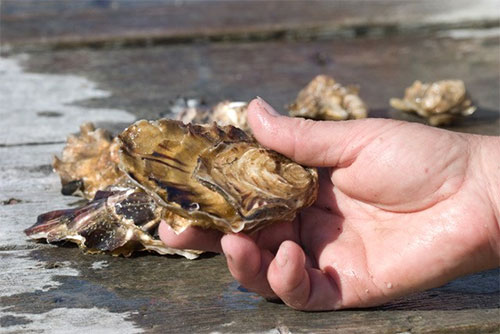
Oyster farmers face challenges and opportunities in AlaskaBy PAULA DOBBYN
December 27, 2018
Experts on marketing and business resources, including staff from federal and state agencies, researchers, and Alaska Sea Grant’s Quentin Fong and Torie Baker,, were among the attendees.
“We heard just how hard it is to be a shellfish grower in Alaska, and we discussed ways to ease that burden,” said Heather Brandon, director of Alaska Sea Grant. “I was particularly struck by Jim Aguiar’s story.” Aguiar of Eagle Shellfish Farms, located in Prince William Sound, has tested and improved on five iterations of oyster cages, the gear used to grow oysters in the sea. He began with plastic cages, but sea otters easily chewed holes in the sides, reached their arms in, plucked out all the oysters and ate them, Brandon said. The next season Aguiar switched to metal, but the racks inside the cages rusted, became worn through from chafing, or collected biofouling—creatures that attach to both gear and oysters, and limit oyster growth. “Finally, after 15 years and feeding over 1 million oysters to sea otters and sea stars, Jim has dialed in his gear and his techniques, using coated metal racks and dipping the cages in 140-degree water, called ‘hot dipping,’ once during the growing season to kill the biofouling,” said Brandon. Oyster farming in Alaska is relatively new compared to the rest of the country and world. “Start-up costs are high, yet this small band of oyster farmers and hatchery operators are keen to be the early adopters in a state full of pioneers,” Brandon said. Brandon sits on the Alaska Governor’s Mariculture Task Force, an 11-member team that is working to develop a viable and sustainable mariculture industry for the long term benefit of Alaska’s economy, environment and communities.
|
|||||
